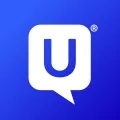
How to ask ‘the right’ questions in user research

Asking useful questions that generate valuable answers is a skill that takes time, practice and experience.
It can also mean the difference between a valid test and a complete waste of time and money. If you’re a UX research newbie though, there are helpful rules to get started in writing useful questions that deliver genuine, valuable insight.
What are the ‘right’ questions?
At a basic level, asking ‘the right’ questions means encouraging users to share their point of view, without your influence or bias.
Your job as a UX researcher is to uncover truth and honesty. Your job is to gather user feedback that isn’t colored by your own hopes or expectations. Your job is to listen, and to be deliberate with your words and actions. Crafting effective UX research questions is the first step in your journey toward valuable customer insights.
Where to begin?
To ask good questions in an in-depth interview – the ones that get to the heart of the user experience – you should consider the aim and scope of your UX research.
- The aim is the problem or issue you want to solve, or the information you want to obtain
- The scope is the extent of your research, including the number of users involved and the different research methods applied
With these in mind, you can plan questions that will help you discover what your user’s goal is when using a product and how they go about achieving it.
With this information in place, you can begin to explore what works well, what works not so well and what doesn’t work at all for users.
Remember to explore all three of these areas as fully as possible. The point is to discover problems that currently exist, but it’s also good to highlight what is working well. Don’t dwell on them too long, but it’s good to report positives back to stakeholders, as these can help ‘cushion the blow’.
Your time with the user will be limited, so you’ll want to stick to the task at hand, but always keep an ear out for behavior or comments you weren’t expecting – as ultimately these can all help improve the overall experience of your product.
Asking users about their expectations
At any point while using a product, there is a natural next step that your users will want to take (i.e. when you add a product to a basket, you might expect to be offered the choice to view the basket or continue shopping). A key part of your questioning will be to ask users what they expect those next steps to be.
Knowing what your user’s expectations are will help you build workflows and customer journey maps to match them. And the only way to find out what those expectations are, is to ask users directly.
Other questions may deal with their initial impressions of a product, their feedback about common examples of use of the product, and their comments on any changes you may have in mind for an existing product or service.
Making questions relevant and actionable
Before you ask users your questions, try them out on a test audience. This audience can be people you know, who you can rely on to give sincere and constructive opinions on whether your questions make sense or not. You may want to prepare a cup-of-tea/stiff-drink and the quiet room.
After you’ve finished the test, the answers will be collated and analyzed. It helps to consider this stage when coming up with your questions beforehand. Your users’ responses should be actionable, either directly or after analysis (i.e. offers practical guidance on how you can improve the product).
If you cannot see how you will practically use the responses to improve user experience, then think of a different question. Analysis of quantitative data may be easy (count the number of yes and no replies), but this is more complicated to action. Information from qualitative questions may be harder to analyze but can give you a clearer picture of how to improve your product.
Three stages of questioning
The questions themselves can be organized into three stages.
You start with a broad introduction, then a focus on the specifics, before ending with a more general perspective.
These three different phases can look like the following:
#1 Opening section
These are broad questions, where you find out about your users’ work, use of the product and any overall feedback they may have. “Tell me about a typical day for you at work?” and “What are your biggest daily challenges at work?” are typical icebreakers.
#2 Middle section
This is more focused. Ask for opinions on specific features of interest that are tied to your research goals, why they hold these opinions and what they expect to see or achieve.
#3 Closing section
When announcing the end of the session, you can open opportunities to gain extra information and insights. Users often feel more able to express themselves freely at the end of a session as though the pressure is off, so don’t ignore the value of the closing section. Instead, use it to ask pivotal questions like “If you could change one thing, what would it be?” or to rate their experience, or ask how useful they think a specific function or feature will be for them.
Removing bias
Often without meaning to, we can influence people’s answers by the way we phrase a question.
Here’s an example of two very similar questions that could lead to wildly different answers:
- What do you like about this product feature?
- What do you think about this product feature?
In the first question, we’re restricting the answer to only the good things they’ve discovered about your product.
In the second question, the field is open: the user can reply with good things, bad things, or both, depending on the feature.
We might not like the answer to question 2 as much as question 1, but it’s the answer to question 2 that’s the one we need to hear and will make a difference.
Also keep in mind that what users say and what users do may be two completely different things. Remote observation of how someone uses a product or service may uncover important truths that simply talking about it may not have revealed.
Checklist for effective interviewing
Think of the following list as the basics you always need to cover, no matter what specific area or product you’re working on.
- Attitude – Make a point of being appropriately positive, approachable, open, curious and focused.
- Appropriate location – Ensure that the location lends itself to realistic usability testing in a normal, stress-free (for you and your interviewee) environment.
- Build rapport – Trust, empathy and freedom of choice are critical. Be sure that your interviewee knows that the usability testing is voluntary and not imposed.
- Consent forms – These inform participants of the purpose of the interview and record their agreement, while protecting everyone legally.
- Supporting devices – At a practical level, remember to organize easy access to the product or solution they’re testing. Ensure your recording devices are ready to note or track user behavior. And make sure all necessary batteries are charged before you start.
- Focus on outcomes – How does the participant feel when using or after having used your solution? What useful feedback can you get to help develop or modify product design accordingly?
- Be patient with silences – Your interviewee may be remembering a relevant point or thinking how best to express feedback.
- Check understanding – It is essential to correctly understand what your interviewees say and what motivates them to use your product as they do. Rephrase or summarize what you have heard or noticed out loud to your interviewees. Ask them if you have accurately captured all their comments and feelings.
- Balance note taking with engagement – You want to record as much of your interviewee’s input as possible, but make sure you stay engaged. Using shorthand and making an audio or video can let you better focus on making the most of your time with your participant. Even better would be having someone else from your team taking notes while you do the questioning. It’s worth remembering that you can make the session appear very formal if you’re taking notes and this can lead to extra pressure. People generally feel more inclined to speak when it feels like natural conversation.
- Thank your interviewee when the interview is over – May be obvious, but politeness can be an afterthought if your day is packed with running multiple tests.
- WHY? – When all else fails during the interview (if the user has a question, if the user is stuck, or the user makes a comment about something that’s not working) always ask WHY? Asking “Why?” is a researcher’s best friend – “Why did you do that?” “Why did you have that expectation?” etc.

Watch a demo
See how easy it is to get fast feedback on a website, prototype, design, or more in this demo.





